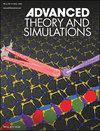Graphene‐Enhanced Photonic Crystal Biosensor for Acetone Detection in Wastewater: A Novel Environmental Monitoring Approach
IF 2.9
4区 工程技术
Q1 MULTIDISCIPLINARY SCIENCES
引用次数: 0
Abstract
Wastewater with high organic content poses serious risks to human health, necessitating precise detection of compounds like acetone. This work presents the design and analysis of a high‐performance biosensor based on a defective 1D ternary photonic crystal (TPC) for detecting acetone concentrations via refractive index (RI) changes. The TPC consists of alternating layers of Si, Nb₂O₅, and SiO₂, with a central defect layer infiltrated by water‐acetone mixtures. The transfer matrix method (TMM) is employed to investigate the transmission spectra. Detection relies on the strong correlation between the defect mode and the RI variations of the infiltrated medium. Key structural parameters—number of periods, defect layer thickness, and incident angle—are optimized to enhance sensitivity (S). Furthermore, the influence of graphene insertion on the sensor's performance is explored. At an incident angle of 55°, with three periods and a defect thickness of 2770 nm, the sensor achieves a maximum S of 3658.25 nm RIU用于废水丙酮检测的石墨烯增强光子晶体生物传感器:一种新的环境监测方法
高有机物含量的废水对人体健康构成严重威胁,需要对丙酮等化合物进行精确检测。本研究提出了一种基于缺陷1D三元光子晶体(TPC)的高性能生物传感器的设计和分析,用于通过折射率(RI)变化检测丙酮浓度。TPC由Si, Nb₂O₅和sio2交替层组成,中心缺陷层被水-丙酮混合物渗透。采用传递矩阵法(TMM)研究了透射光谱。检测依赖于缺陷模式和渗透介质的RI变化之间的强相关性。优化了关键结构参数——周期数、缺陷层厚度和入射角,以提高灵敏度(S)。此外,还探讨了石墨烯插入对传感器性能的影响。在55°入射角、3个周期和2770 nm缺陷厚度下,传感器的最大S为3658.25 nm RIU−1。所提出的生物传感器在检测废水中的有机污染物方面表现出优异的精度,使其成为环境监测和水质评价的有希望的候选物。
本文章由计算机程序翻译,如有差异,请以英文原文为准。
求助全文
约1分钟内获得全文
求助全文
来源期刊

Advanced Theory and Simulations
Multidisciplinary-Multidisciplinary
CiteScore
5.50
自引率
3.00%
发文量
221
期刊介绍:
Advanced Theory and Simulations is an interdisciplinary, international, English-language journal that publishes high-quality scientific results focusing on the development and application of theoretical methods, modeling and simulation approaches in all natural science and medicine areas, including:
materials, chemistry, condensed matter physics
engineering, energy
life science, biology, medicine
atmospheric/environmental science, climate science
planetary science, astronomy, cosmology
method development, numerical methods, statistics
 求助内容:
求助内容: 应助结果提醒方式:
应助结果提醒方式:


